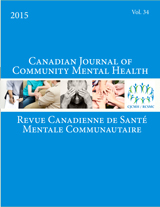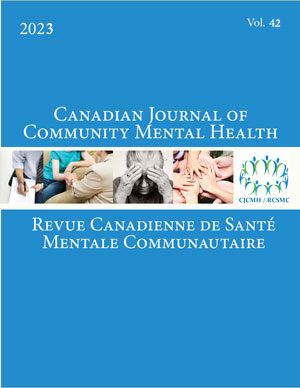Volume 34 • Number 2 • July 2015
Articles
OPEN ACCESS
This paper presents the findings of a systematic search and review examining the acceptability of e-mental health services for children, adolescents, and young adults and their parents and healthcare providers. Multiple databases were searched and abstracts were screened to determine if they met study inclusion criteria. Findings from included studies were synthesized within five dimensions of acceptability: satisfaction, client expectations, uptake, adherence and patient/provider experiences. Twenty-four studies were included, and findings suggest that although clients are generally satisfied with e-mental health and report positive experiences, adherence and uptake can be challenges. In conclusion, e-mental health appears to be an acceptable intervention option for children, adolescents, and young adults and their parents and healthcare providers. Further research is needed to better understand the effectiveness and acceptability of e-mental health for this population, including adherence, patient and provider experiences and integration into existing health systems.
OPEN ACCESS
The Carrier First Nations, who are the original inhabitants of North Central British Columbia, have endured years of hardship as a result of European colonization. Over time, this has resulted in an erosion of traditional practices and a decline in overall health. There is concern that mental health practitioners are not meeting the needs of the Carrier people because they fail to understand the Carrier worldview. In an effort to better understand and respect the Carrier ideas and beliefs about mental health and mental illness, interviews were conducted with 7 traditional healers about their beliefs and their practices. The traditional healers reported that the concept of mental illness did not exist in pre-contact culture. However, the traditional healers who participated in this research actively practise ceremonies and rituals that seek to restore balance and harmony between the person and his or her environment.
OPEN ACCESS
The present study explored the prevalence of volatile substance use (VSU ) in a community of homeless adults. The importance of individual life history characteristics (history of traumatic events, residential school history, mental and physical health conditions) were also examined with respect to past-year volatile substance use in this sample. Overall, the results indicate that a variety of traumatic events, particularly residential school history and a number of mental and physical health conditions, were significantly associated with VSU in this urban Canadian sample. These findings have novel implications for community interventions for VSU and highlight the importance of conceptualizing cultural and historical traumas in understanding VSU .
OPEN ACCESS
This study examined the participation of people with lived experience of mental health problems in political, social, and client advocacy. An online survey was conducted of 27 advocacy organizations across Canada. People with lived experience exhibited the highest level of participation in program delivery, with rates of participation varying by advocacy activity and sub-group. Stigma around mental health and severity of illness were rated as the strongest barriers limiting participation. The support of service providers and peer role models were considered effective strategies for increasing participation. Several self-benefits were reported as highly prevalent among mental health advocates.
OPEN ACCESS
This study describes a shared mental health care (SMHC) model introduced in Northern Ontario and examines how its introduction affected primary care provider (PCP) mental health referral patterns. A chart review examined referrals (N = 4,600) from 5 PCP sites to 5 outpatient community mental health services from January 2001 to December 2005. PCPs with access to SMHC made significantly more mental health referrals (p < 0.001). Two demographically similar PCPs were then compared, one co-located with SMHC. Referrals for depression to non-SMHC mental health services were 1.69 times more likely to be from the PCP not co-located with SMHC (p < 0.001). Findings suggest SMHC increases access to care and decreases demand on existing mental health services.










